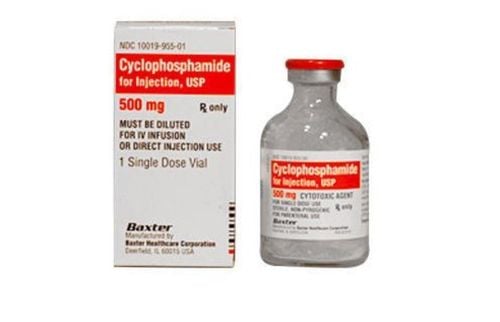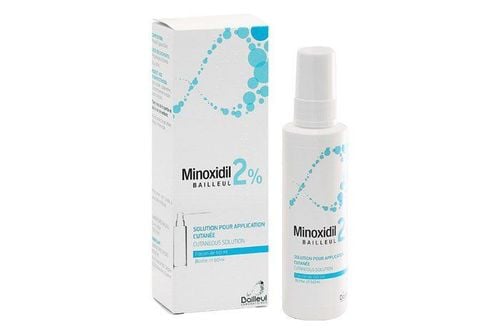This is an automatically translated article.
The article was written by doctors of Internal Oncology - Radiation Oncology Center - Vinmec Times City International General Hospital.For some people who have undergone cancer treatment, hair regrowth after chemotherapy is significant. Chemotherapy kills cancer cells, but it also kills healthy cells. That's why most people will lose at least some of their hair while undergoing chemotherapy.
1. The process of hair growth after chemotherapy
Hair regrowth is slow but steady and hair loss is rarely permanent.
Hair growth after chemotherapy :
Hair loss can be all or part of each person's hair, or for some people it's just that the hair becomes thinner or more brittle. People who may find their hair grows faster after chemotherapy. Hair regrowth can begin as soon as chemotherapy is no longer attacking healthy cells. Hair growth rate depends on age, health and other factors, for example ethnicity.

Sự phục hồi tóc sau hóa trị tùy thuộc vào nhiều yếu tố khác
2. How long does it take for hair to start growing after chemotherapy?
Healthy cells in the hair follicles that support hair growth are affected by chemotherapy treatment.
Therefore, cancer patients receiving chemotherapy may experience hair loss, hair on the head, eyelashes, eyebrows and other places on the body.
Hair loss usually occurs after 2 weeks of treatment and becomes more severe in the next 1-2 months.
Hair will not grow back immediately after the last chemotherapy session. This delay is because chemotherapy drugs take time to clear from the body and stop attacking healthy dividing cells.
Most patients will begin to see an amount of thinning, translucent hair a few weeks after the last chemotherapy treatment. And real hair starts to grow within a month or two after that.
There are a small number of people who will never grow their hair back after chemotherapy. Chemotherapy drugs can cause permanent hair loss. Docetaxel can cause permanent hair loss in some people.

Thời gian mọc lại tóc sau hóa trị ở mỗi người đều khác nhau
Timeline All hair will go through a rest period, during the non-growth period. Furthermore, the hair will fall out when it reaches a certain length or when it is pulled.
The following timeline shows what happens after chemotherapy:
2-3 weeks: Light, fine hairs 1-2 months: Stronger hairs begin to grow 2-3 months: Hair grows approx. 2.5 cm 6 months: 5-7cm hair growth, covering bald patches. 12 months: Hair may have grown 10-15 cm and is long enough for brushing or styling It can take several years to grow your hair the way it used to, especially for people who used to have long hair.
Hairstyles and structure After chemotherapy, the hair initially grows thin, upright and difficult to style. Because the hair is so thin, it is also difficult to see from a distance.
Some hair follicles may be in a more active growth phase than others, so the length of a person's hair may vary, making styling more difficult. Hair may look patchy or untidy at first.
Over time, the hair will stabilize and grow more steadily. But the hair structure may be different from before. Some people who have recovered from cancer may have hair that becomes more brittle, breaks or becomes loose, frizz, or even changes color.
Sometimes the change in a person's hair quality is only for a short period of time, however in some cases it can be permanent. There is no way to predict whether the hair changes after chemotherapy will be permanent or not.
Doctors still don't fully understand why hair structure sometimes changes after chemotherapy. It is possible that chemotherapy damages the genes that control hair growth, or alters the hair follicles.

Tóc giả có thể hỗ trợ một người đang chờ tóc mọc lại
Stimulates hair growth after chemotherapy Good hair care can keep hair healthy as it grows back.
Avoid brushing or pulling too much, which can cause more hair loss. Styling with a machine or dryer can also damage hair, and can make it look thin and brittle.
The use of drugs to increase hair growth after chemotherapy is largely experimental. Most hair regrowth drugs are designed to treat other causes of hair loss than chemotherapy.
People should discuss the risks and benefits of hair regrowth treatment with their doctor if concerned.
A 2004 study in rats found that estrogen applied to the scalp can increase hair growth.
More recent studies also show that Minoxidil can speed up hair regrowth, or even reduce hair loss during chemotherapy.
Using a wig Wigs can assist a person who is waiting for their hair to grow back. Some organizations even donate wigs to people with cancer. There is also an FDA-approved cold cap that can help during chemotherapy for both men and women, known as the Digni-Cap, which works by cooling the scalp to reduce the possibility of shedding. hair in people with cancer.
Hair regrowth after chemotherapy is a positive sign of improving the person's health. However, people who already have cancer need to understand that this will also take some time.
Reference article: Medical news today 2019
SEE MORE:
Hair loss due to chemotherapy Psychological characteristics in cancer patients Distinguish physiological hair loss - pathological hair loss













